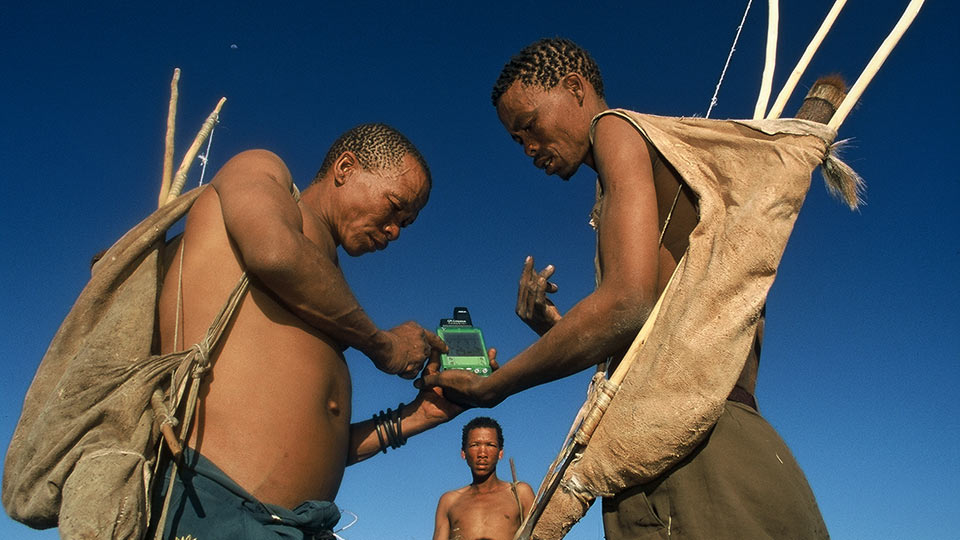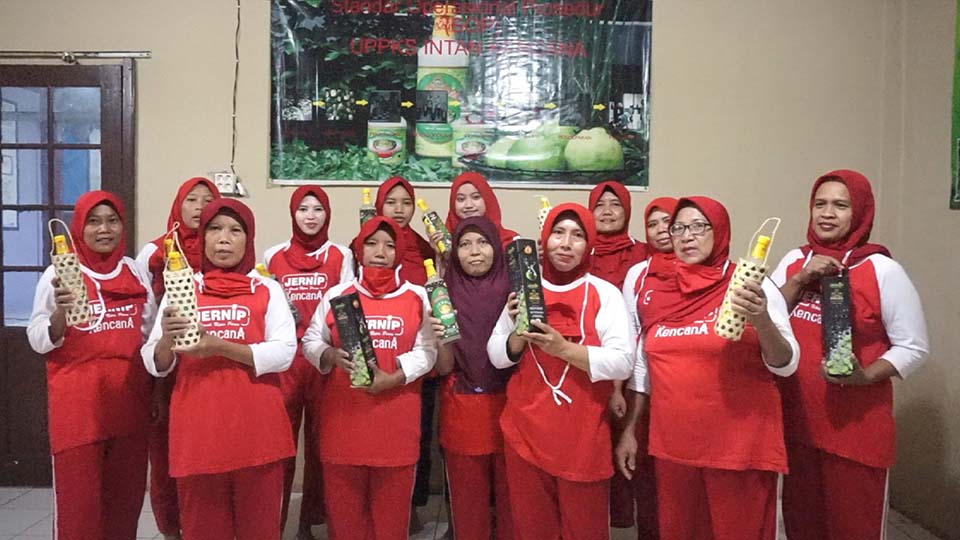Started by WIPO in 2016, a branding project using intellectual property (IP) supported a community of female basket weavers in Kenya’s Taita Taveta County in acquiring a collective mark. The “Taita Basket” mark is a strategic IP tool for developing their regional brand, which the basket weavers hope will allow them to command higher prices, increase sales and improve their standards of living.

Kenya’s Taita Taveta County is located approximately 200 km northwest of Mombasa and 360 km southeast of Nairobi. The county covers an area of nearly 17,100 km, about 62% of which lies within two national parks. Three sisal estates are in operation, including the Teita Sisal Estate, one of the largest in the world. Strong fibers derived from the plant’s leaves are used for making various products such as ropes and twines.
“Taita Baskets” are sisal baskets handwoven by women in Taita Taveta County. They are laboriously crafted in a traditional way from the thin sisal fibers, and used for household purposes such as carrying things and storing grains. The knowledge of basket weaving has been passed down through the generations, from mother to daughter. The basket weavers usually consist of small groups of women, most of whom are middle-aged or elderly.
The sale of the baskets brings them an important cash income, which allows them to pay school fees for their children and put more food on the table. It is difficult for an individual basket weaver to find new customers on her own. Moreover, women are constrained from going long distances to promote their products, as they often bear the responsibility of housework and childcare in addition to agricultural work. In consequence, the main buyers of their baskets are brokers, who come and collect the baskets as well as tourists staying at lodges in the area.

Even frequent customers widely consider the quality of the baskets to be better than similar baskets made in other regions, the basket weavers wanted to further distinguish their baskets. Some of them once found someone from outside of the community using the name for their baskets without permission. They were concerned that outsiders were taking advantage of their name. They needed an IP tool to prevent their name from being misappropriated by others.
The Taita Taveta County Government was committed to moving the branding project forward in order to support the basket weavers in transforming the activity from a part-time job to a business. H. E. John Mruttu, Governor, assured the County Government’s support for the project in developing a regional brand.
One of the problems that affected the marketability of the baskets was that there was no identity. You could not tell which came from Taita and which came from elsewhere.
H.E. John Mruttu, Governor of Taita Taveta County
Forming a collective
Once, there was an attempt by a certain group to register the trademark “Vidasi”, which means “Basket” in local Taita language, but it did not reach the point of a formal application for registration. The idea was rejected by the community for the reason that the word “Vidasi” should be able to be used by all basket weavers in the region. They needed an IP tool which could be used by the whole community, such as a collective mark or certification mark under the Trade Marks Act of Kenya, which Kenya uses to protect regionally branded goods (i.e. geographical indications).
WIPO’s branding project, which was implemented from February 2016 to March 2017, supported the basket weavers in acquiring a collective mark. The Taita Taveta County Government preferred establishing a collective mark rather than a certification mark, because setting up a certifying body would take a long time and access to the villages for certification is limited.
In order to get a collective mark, the basket weavers needed to form an association. The association was registered as “Taita Baskets Association” with the Office of the Attorney General and Department of Justice on November 18, 2016. By bringing together the basket weavers and assisting them in forming an association, the 400-strong Taita Baskets Association would have more power to find new markets and sell their baskets at a higher price.

Weaving together quality standards
Before the project, there had been no quality control in place, and even though established quality standards are not a requirement for registering a collective mark, the Association believed quality standards to be a crucial element of a successful brand.
In setting the quality standards, the elements to be included and the level of quality required were carefully taken into consideration. If the standards were vague and lacking detail, the evaluation of quality may differ from one person to another. On the other hand, if the standards were too precise and detailed, they may prevent the basket weavers from exercising their creativity. The Association decided not to include colors and patterns in the standards, so that the basket weavers would be able to employ any traditional patterns passed down from earlier generations or create new patterns without limitation.
The level of quality required by the standards was an important issue. If set too high, the level would not be achievable for most of the basket weavers. Naturally, it would not be good for the community if only a few of them were allowed to use the collective mark. On the other hand, if the level was too low, such standards would add no value to the mark. Therefore, the level had to be set in a balanced manner so that most basket weavers are able to achieve it with reasonable efforts.

For this purpose, data were collected on 300 baskets, including photos (top, side, bottom), measurements (top diameter, bottom diameter, slant height), weave tightness (diameter of thread, number of warps, number of wefts, weight), colors and dyes. With this information, the Association was able to outline the quality standards for use of the collective mark. However, since there is no external authority to certify the quality standards of an individual member’s basket, it is necessary for each basket weaver to maintain the quality standards herself, in accordance with the standards established by the Taita Baskets Association.
To prevent any members from falling below the newly-established quality standards, training was organized on improving the quality of baskets to meet the standards. More than 400 of the basket weavers were trained by skilled experts to improve and harmonize the quality of their baskets.
The responsibility for compliance with the quality standards belongs to the basket weaver who made the basket.
Art. 5(3) Quality Standards, Regulation and Quality Standards for Collective Mark “Taita Basket”

“Taita Basket” as a mark of origin
The mark was created through an interactive process based on a variety of ideas from the basket weavers. In the mark, they wanted to include the symbols of a basket, a sisal plant, and the hills in which they lived. For them, this design represented the nature of their baskets in the most appropriate manner. The design was chosen from several options. Following additional discussions, the design was further developed and finally adopted by the Association.


(KIPI Registration No. 94134)
The collective mark was registered with the Kenya Industrial Property Institute (KIPI) on April 3, 2017. The Nice classifications under which the mark was registered include class 20 (baskets not made of metal) and class 21 (baskets for domestic use). The project wrapped up at an event, which ran from March 1 to 2, 2017. WIPO provided the Association with 30,000 paper tags featuring the newly registered collective mark, which signal the official conclusion of the project.
Although the name “Taita Basket” has previously been in use, the actual collective mark registered with KIPI is unfamiliar to consumers. The basket weavers need to continue to use the mark until it accumulates enough good will and the mark becomes recognized as a quality brand by consumers. That said, by having introduced quality standards, customers can expect a certain level of quality even though the mark is new. This is part of the added value that the mark represents.
Preserving traditional knowledge
The Taita Taveta County Government had a strong interest in organizing an association for more than just the benefit of registering a collective mark. The County Government wanted to help transform traditional basket making from a part-time job into a more commercial business. Not only would the formation of an association enable basket weavers to enjoy the benefits of economies of scale and make their baskets more competitive, it is also expected to help preserve their regional tradition of basket making.
The mark was registered with a view to raising the name recognition of the basket and the region, to preserving and fostering the traditional basket weaving of quality, and to strengthening the solidarity among member groups.
Art. 2(2) Purpose, Regulation and Quality Standards for Collective Mark “Taita Basket”
The acquisition of a collective mark and the formation of an association would also better allow the County Government to provide more support – a task that is more difficult when the beneficiary is an individual or a small group.
Overcoming challenges through collaboration
There were some challenges in the course of carrying out the branding project. One concern that arose was in the origin of the materials used in “Taita Baskets.” Some members resided outside of the border of Taita Taveta County and used sisals grown and harvested in a different area. The solution was to specify as part of the quality standards that the materials used must be grown and harvested in Taita Taveta County and its vicinity.
Most of the basket weavers do not speak English and in the beginning were completely unfamiliar with IP. This problem was solved early in the project through workshops at which officials from KIPI explained about IP in the local languages (Swahili and Taita) and in a practical way that made sense to the basket weavers.
Active cooperation among the partners enabled WIPO to complete the project with success. WIPO, in cooperation with the Japan Patent Office (JPO), led the project with the assistance of the Japan International Cooperation Agency (JICA), KIPI, the Ministry of Trade, Industry and Cooperatives of Kenya, and the Taita Taveta County Government. Financing for the project came from the Government of Japan through a Funds-in-Trust arrangement with WIPO.

A new beginning
The branding project has now ended, but the story goes on. Not only did more than 400 basket weavers in Taita Taveta County learn about the IP system, but they also became active users. The association now holds a collective mark as their own IP for developing their newly established regional brand.
It may be some time before the collective trademark “Taita Basket” becomes familiar to consumers as a regional brand of quality. However, once the quality of the brand is well known, it will help to justify the fair prices that the baskets warrant, bring more profit to the basket weavers, and improve their quality of life. In this sense, one can say that the work of the Taita Baskets Association to foster a regional brand has only begun.
I hope this project will become a successful example of how to enhance the brand value of African products by leveraging IP.
Toshiyuki Machida,Third Secretary, Embassy of Japan in Kenya



